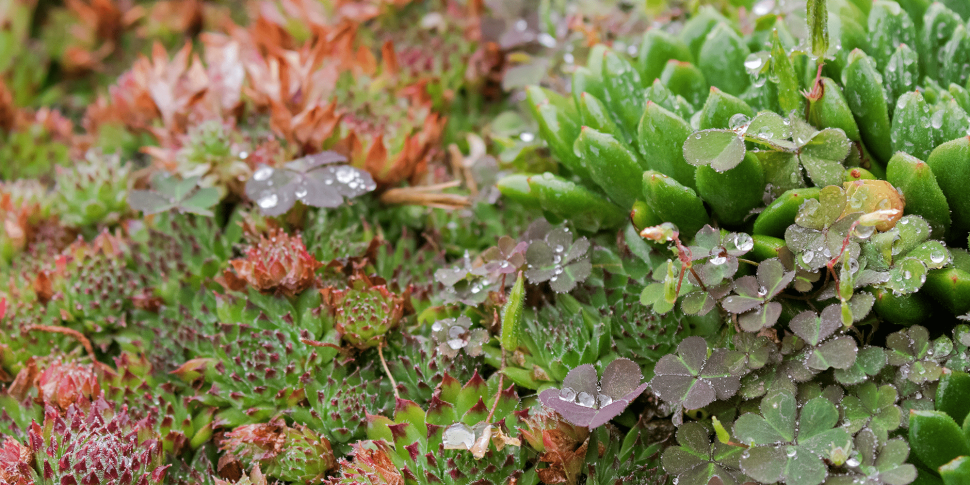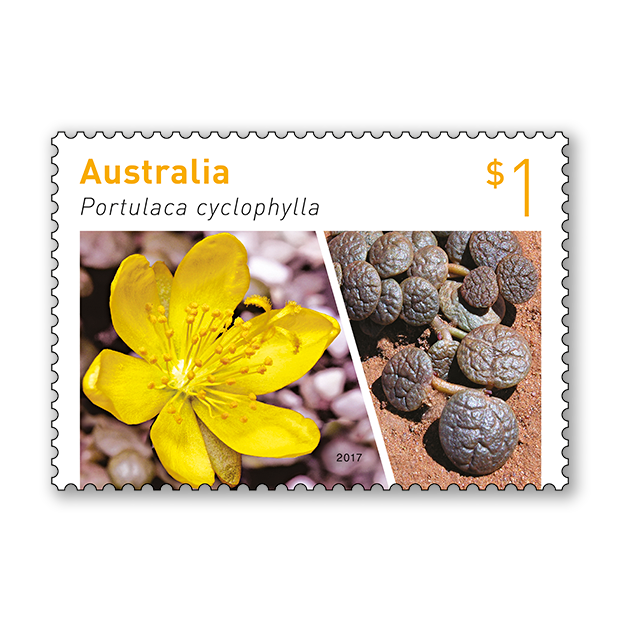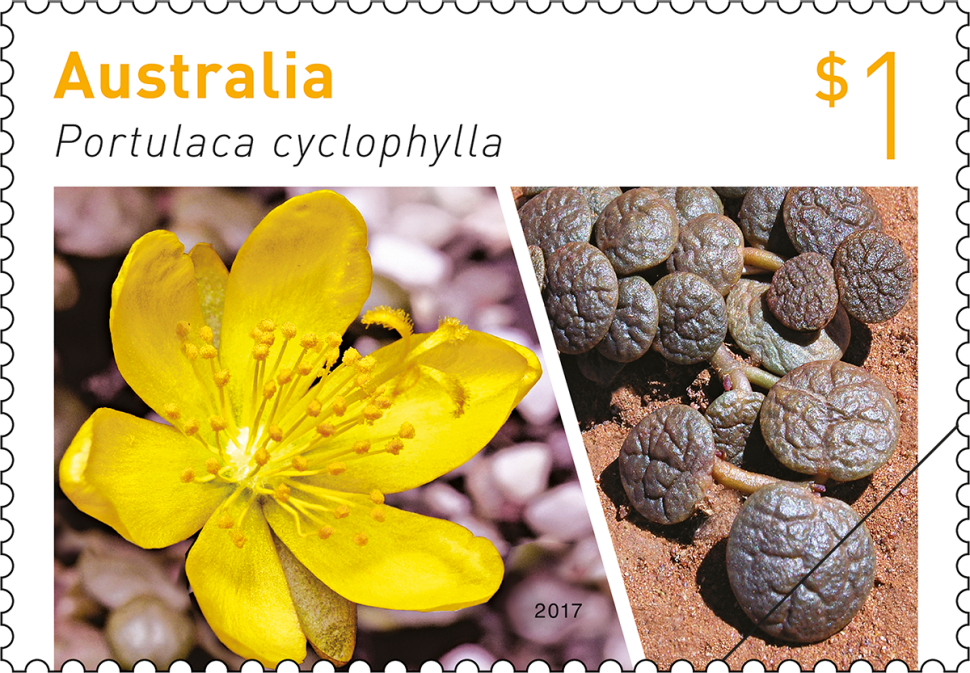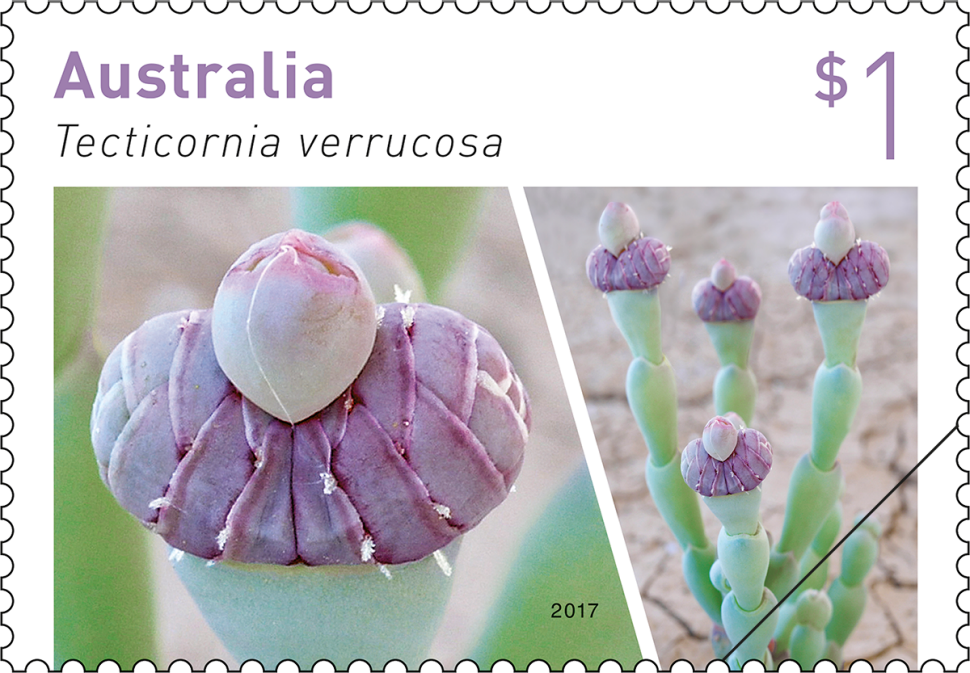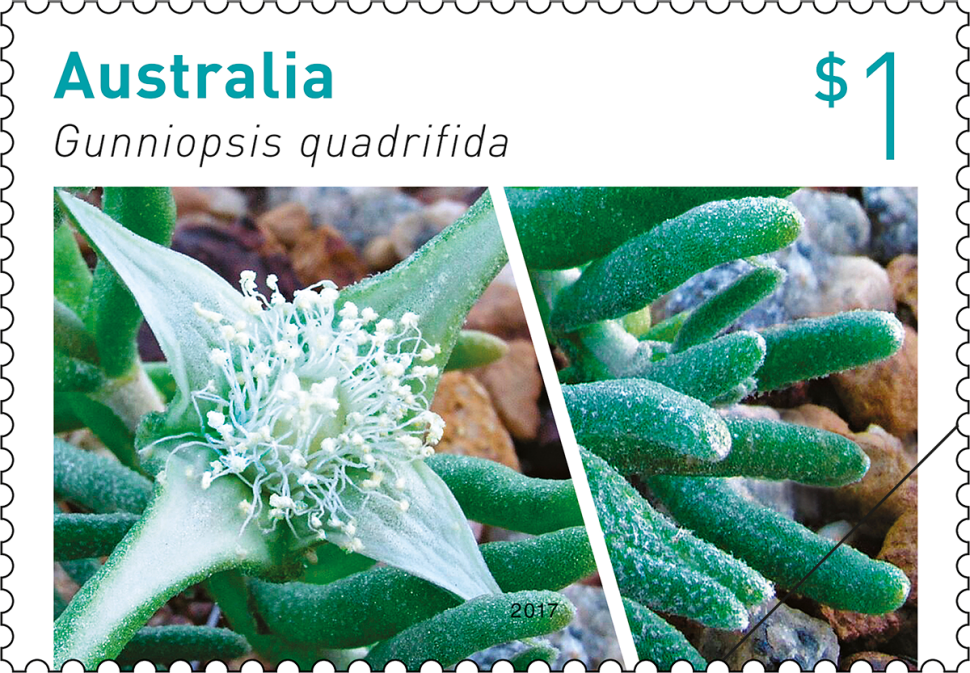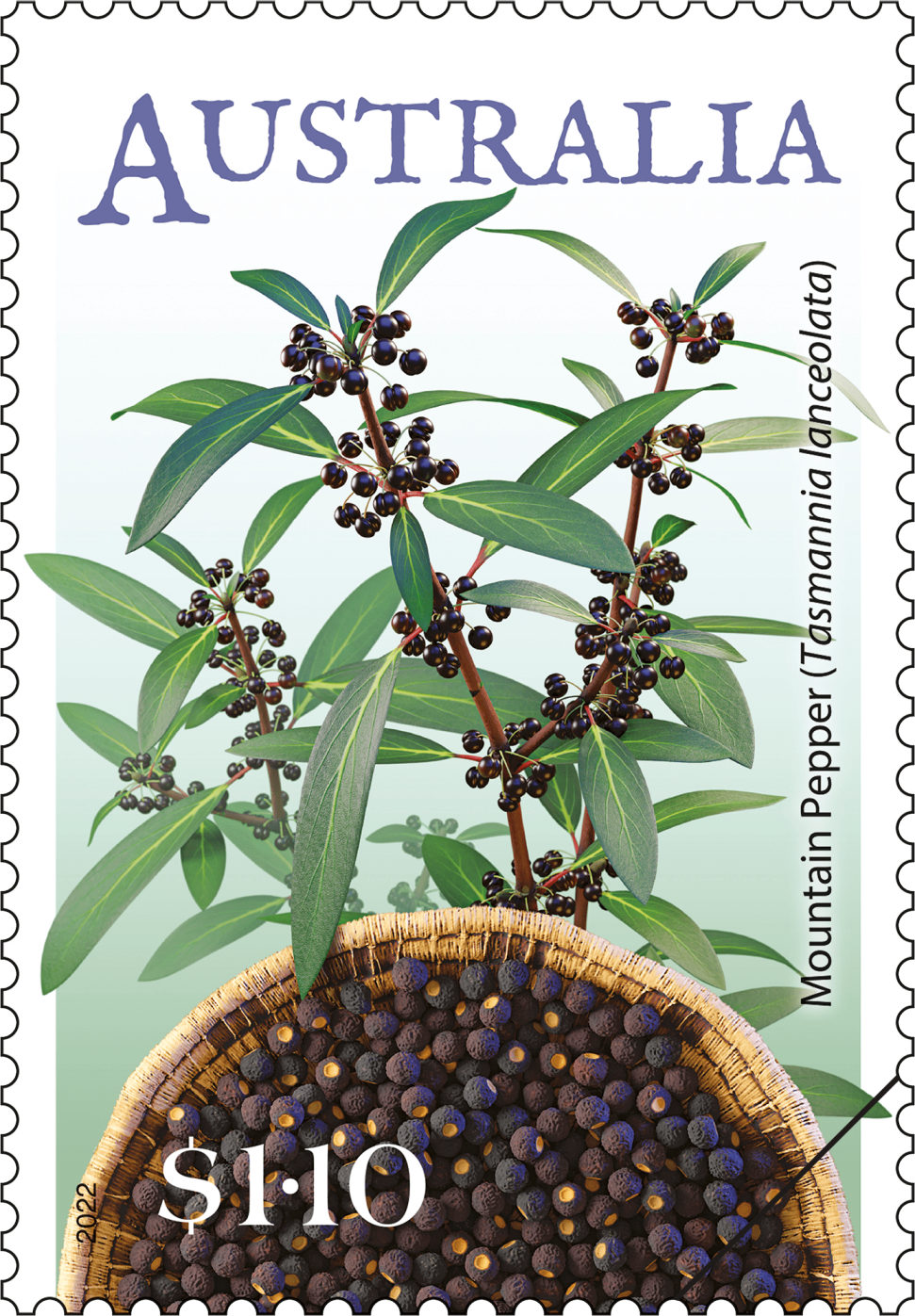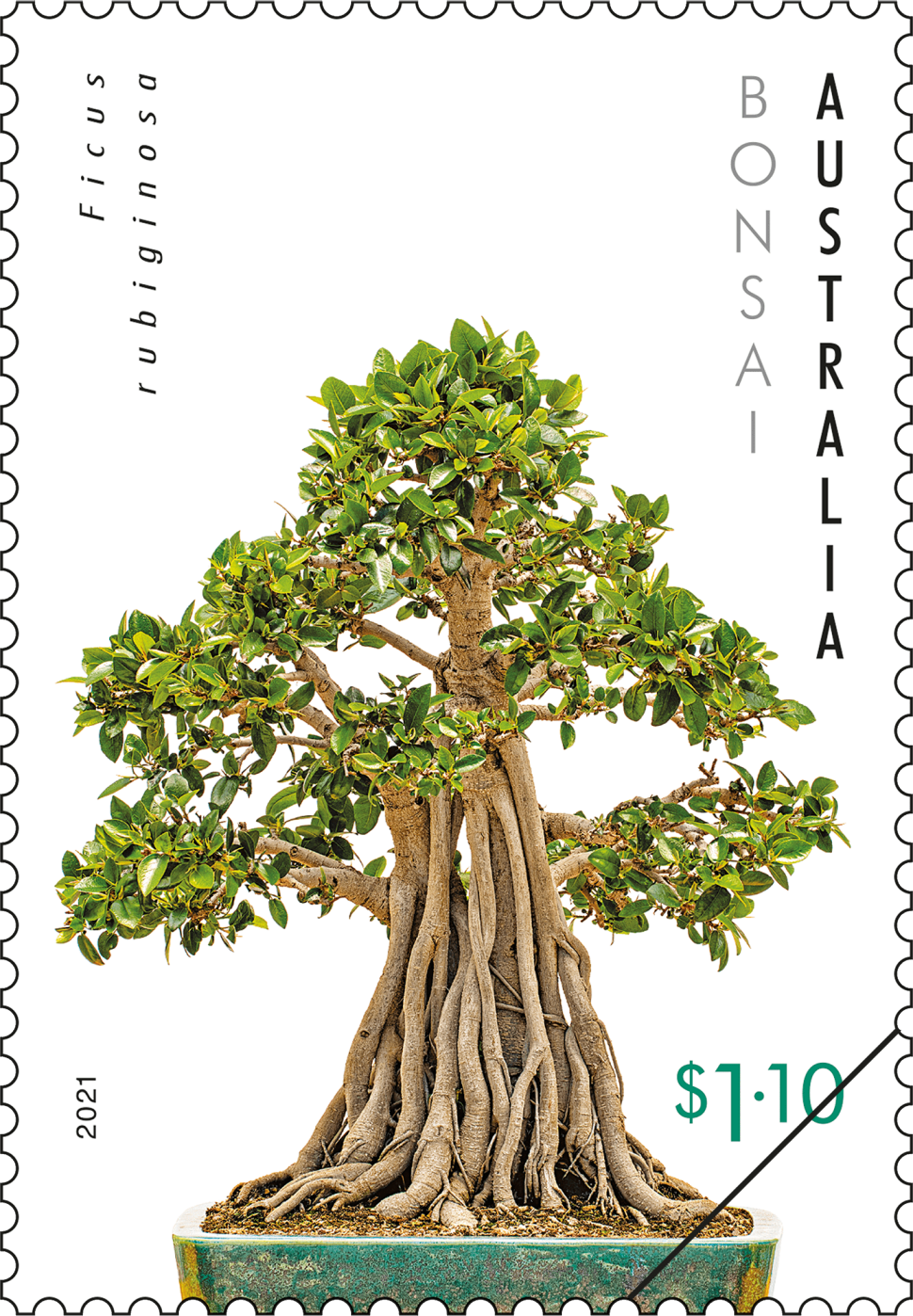Succulent plants occur through most regions in Australia and in every state and territory. They can be found in coastal, inland, temperate, subtropical and tropical environments, and prefer seasonally dry or semi-arid conditions. While the popular conception of these plants is that they are groundcovers or low-growing, this group also includes orchids, hoyas, shrubs and even the boab, or the bottle tree.
Of the 20,000 or so vascular plants native to Australia, about 400 are considered succulent, adapting to dry conditions over thousands of years by evolving the capacity for water storage in the tissue of their leaves, stems, trunks or roots. While there is some debate as to what defines “succulence”, besides water-storing capacity, two criteria for a plant to be considered a succulent are the ability to withstand long periods of dry without severe leaf loss and the ability to not only survive but continue to grow with minimal food, water and care.
The four succulent species featured in the stamp designs are endemic to Australia. The designs show two aspects of each species: the foliage and the flower.
The photographs are from the collection of Attila and Michele Kapitany – Attila has spent the past 40 years of his professional life researching, growing and promoting succulent plants to Australian gardeners and has written several books on the topic.
Designer
Janet Boschen, Boschen Design
Products released in this issue
- Stamp pack
- First day cover
- Maxicard set
- Booklet of 10 $1 stamps
- Roll of 100 $1 stamps
Technical specifications
- Issue date
- 20 June 2017
- Issue withdrawal date
- 31 December 2017
- Denominations
- 4 x $1
- Stamp design
- Janet Boschen, Boschen Design
- Product design
- Janet Boschen, Boschen Design
- Printer
- EGO
- Printer - rolls
- Pemara
- Paper - gummed
- Tullis Russell Red Phos
- Paper - self-adhesive
- Raf Ulink
- Printing process
- Offset lithography (flexographic)
- Stamp size
- 37.5mm x 26mm
- Perforations
- 13.86 x 14.6
- Sheet layout
- Module of 50
- FDI postmark
- Botany NSW 2019
- FDI withdrawal date
- 19 July 2017
Portulaca cyclophylla has small circular brown leaves that provide a camouflage effect against its gravelly habitat. This species of the Portulaca genus is unusual in having large, showy blooms of up to 3.5 centimetres in diameter, with an extended central stigma. It is found in arid, gravel habitats of central Western Australia.
Tecticornia verrucosa is a low, bushy perennial shrub that grows to around 55 centimetres in height. This unusually formed plant comprises multi-segmented blue-green, fleshy stems, which turn a purplish-pink as the plant matures and develop a thin interior woody core. This species tolerates both saline sandy soils and mildly saline clay pans, as well as freshwater clay pans. It is found in north, central and south-west central Western Australia, western Northern Territory and north-western South Australia.
Calandrinia creethae is commonly known as Jelly Beans, named for its clusters of smooth, globular succulent leaves. This rosette-like annual has a diameter of around 80 centimetres, with prostrate trailing stems developing from the rosette. Its leaves vary in colour from bright green, when juvenile, through yellow to orange and red, and the flowers are pink and/or white. It grows in sandy soils in dry areas in central Western Australia.
Gunniopsis quadrifida is a perennial low-growing shrub that reaches around 50 centimetres in height and 1.5 metres in width. It has rounded linear, greenish leaves and its fleshy flowers open up with four leaf-like outer “petals” and white to cream centres. It tolerates a range of soils and is found in south-western Western Australia, southern Northern Territory, northern South Australia, south-western Queensland and north-western New South Wales.
This content was produced at the time of the stamp issue release date and will not be updated.
